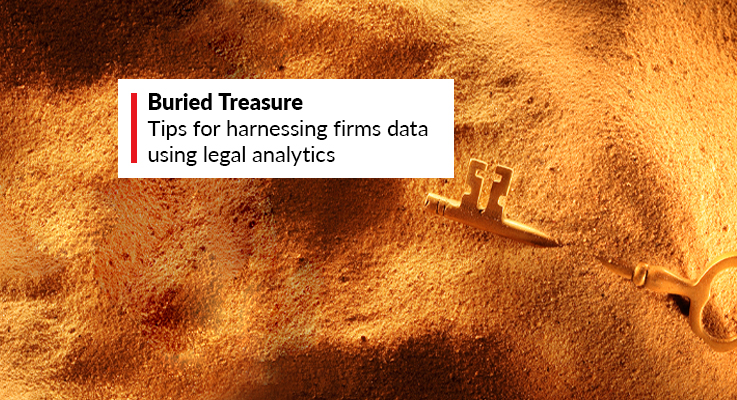Lexis+ AI ® transformed Whitehall & Associates, a growing law firm, into a dynamic force in institutional abuse and personal injury law. Partner Daniela Anicic explains how Lexis+ AI helped to facilitate...
Australia’s merger clearance process is undergoing significant reform, driven by longstanding concerns the current voluntary, informal regime does not sufficiently prevent anticompetitive mergers. After...
As AI is poised to transform workplaces, employee engagement is falling, resulting in a real economic cost. For corporate legal departments, AI adoption presents a significant opportunity to increase department...
Corporate legal departments are under increasing pressure to do more with less. A key area of opportunity lies in how organisations manage their outside counsel spend. With outside counsel hourly rates...
Authored by Shaun Burmester, Legal Writer, Property, Practical Guidance One of the most significant overhauls in Queensland property law in over 50 years is set to take effect on 1 August 2025. The...

The foundations on which law firms and organisations have operated successfully across the globe for many years are shifting at a fast pace. Clients are facing business changes and transformation like never before – and the legal market needs to not only keep up, but also lead the way, to assist clients and maximise business and productivity opportunities.
Some of the questions facing the industry include - “Where do the opportunities lie in particular practice areas?”, “Where should I be focusing my resources?”, “I know what my competitors have been doing but how well have they fared?”, “How do I know more about my clients in order to provide better advice?”, “What is the best litigation strategy in the current scenario that is likely to produce the most favourable result?”
“What do I do”?
The answer is quite simple - understand your data better. Not only external data but also the data that resides within your law firm. Objective data can be a superpower to highlight possibility and remove blindspots.
With the right design principles, technology and legal knowledge, data can reveal patterns and trends that can be used to not only plan your strategy but also educate your peers and clients on the consequences of a matter at hand or just drive firm or organisational growth.
Using firm or organisational data has its own challenges. Firm or organisational data may have particular sensitivities around confidentiality involving clients. Finding a way to anonymize and interpret this data to benefit the clients while aligning with strong legal ethical principles will be key. Underlying the use of firm data will be the answers to pertinent questions such as “What data can be used?”, “What can we do with this data?”, “What data should not be used”?
Top tips
Tip 1 – firm up the question you want to answer and assemble the right team. Subject matter experts, engineers, UX designers. Analytics requires a multi-skilled team to get the best results.
Tip 2 – get the right content set and the right content strategy.
- What is the best approach? Buzzwords “Artificial technology (AI)” and “machine learning” (the most successful stream of AI to date) are bandied about frequently and can be amazingly effective in certain situations, but sometimes a rule-based approach may be more effective. All of this needs to be tested up front.
- Ensure that data is fit for purpose – clean, normalised and with no bias built-in to provide misleading outcomes.
- Ensure the data source is sustainable if updating is required.
Tip 3 – use inclusive and iterative design. Packaging the data and delivering in a way that both staff and clients find to be easily accessible and digestible is key. Inclusive design principles, considerations around cognitive load, spatial contiguity, temporal contiguity and split attention effect will all result in a better outcome.
Actively test prototypes with the intended audience – are the insights easily understood?
Tip 4 – plan for an effective roll-out.
Do the right people know about the new report/analytics tool? Is it reaching its intended audience? Is it easy to access? Is the right support in place?
Make Legal Analytics work for you
A 2020 legal analytics study conducted by ALM intelligence in collaboration with LexisNexis in the US discovered the primary drivers leading to the adoption of legal analytics are competitive pressure and client expectations. 81% users said legal analytics was encouraged or looked upon favourably by clients.
Legal Analytics is the new variable in the equation in the fast-paced environment law firms find themselves in today. Be it learning more about practice areas, comparing jurisdictions for faster decision making, understanding legal counsel behaviour, getting an industry view on litigation, discovering upcoming talent, optimizing resource allocation or just finding answers to questions that you have, Analytics helps you bring out your A game.
Analytics slices and dices data to extract trends and patterns, uses data visualization to quickly display the answers you are looking for and highlight insights to understand and act upon.
The value analytics brings to Law Firms is not just limited to the products that are being launched in the market. Bespoke reports based on custom-built databases can give rise to a competitive edge in business.
Using data to answer your questions productively and more efficiently is the road ahead. Sitting on the sidelines is easy but it will not take the firm where it needs to be. What will is a deep control over the firm’s operations, better knowledge of your competitors and clients and a thorough understanding of the commercial environment the firm is in.
Technology is not about replacing the human element of judgment - analytics is about enabling the human mind. With the right blend of human governance, legal knowledge, design, engineering and technology, the value of legal analytics can be harnessed to your benefit and that of your client’s.
The future lies with what you already have - data.
For more information on LexisNexis Legal Analytics Solutions, contact your Relationship Director/Manager.





